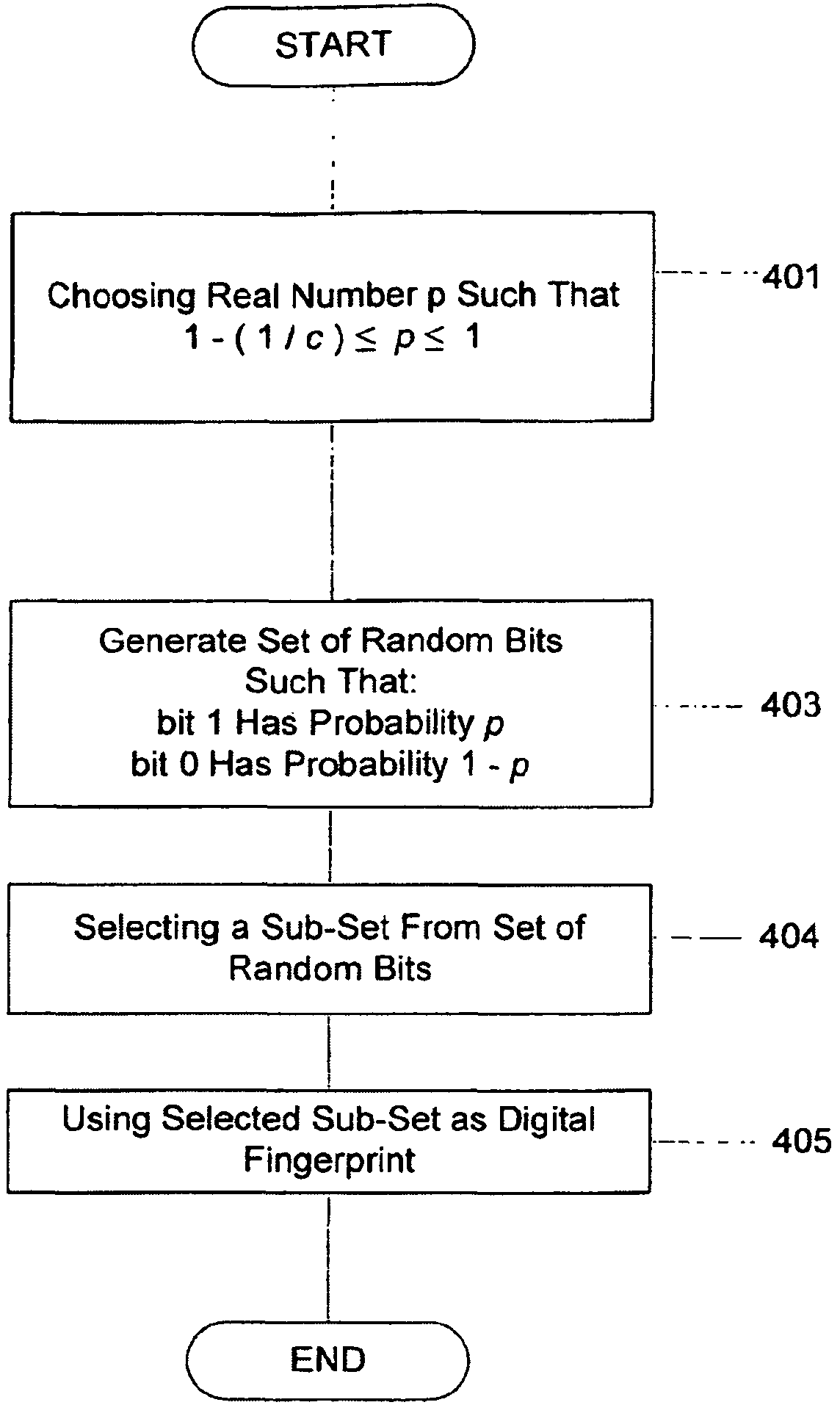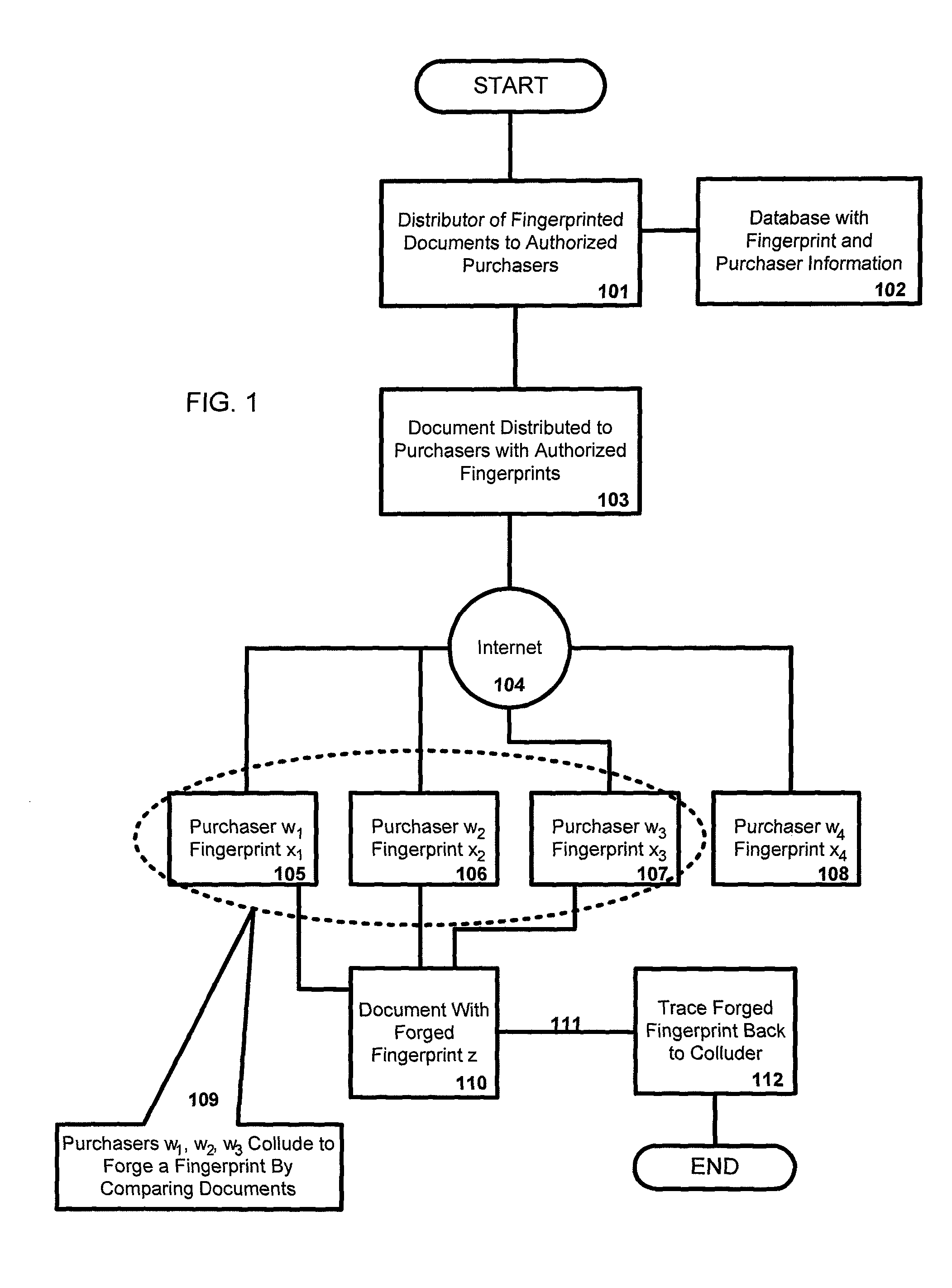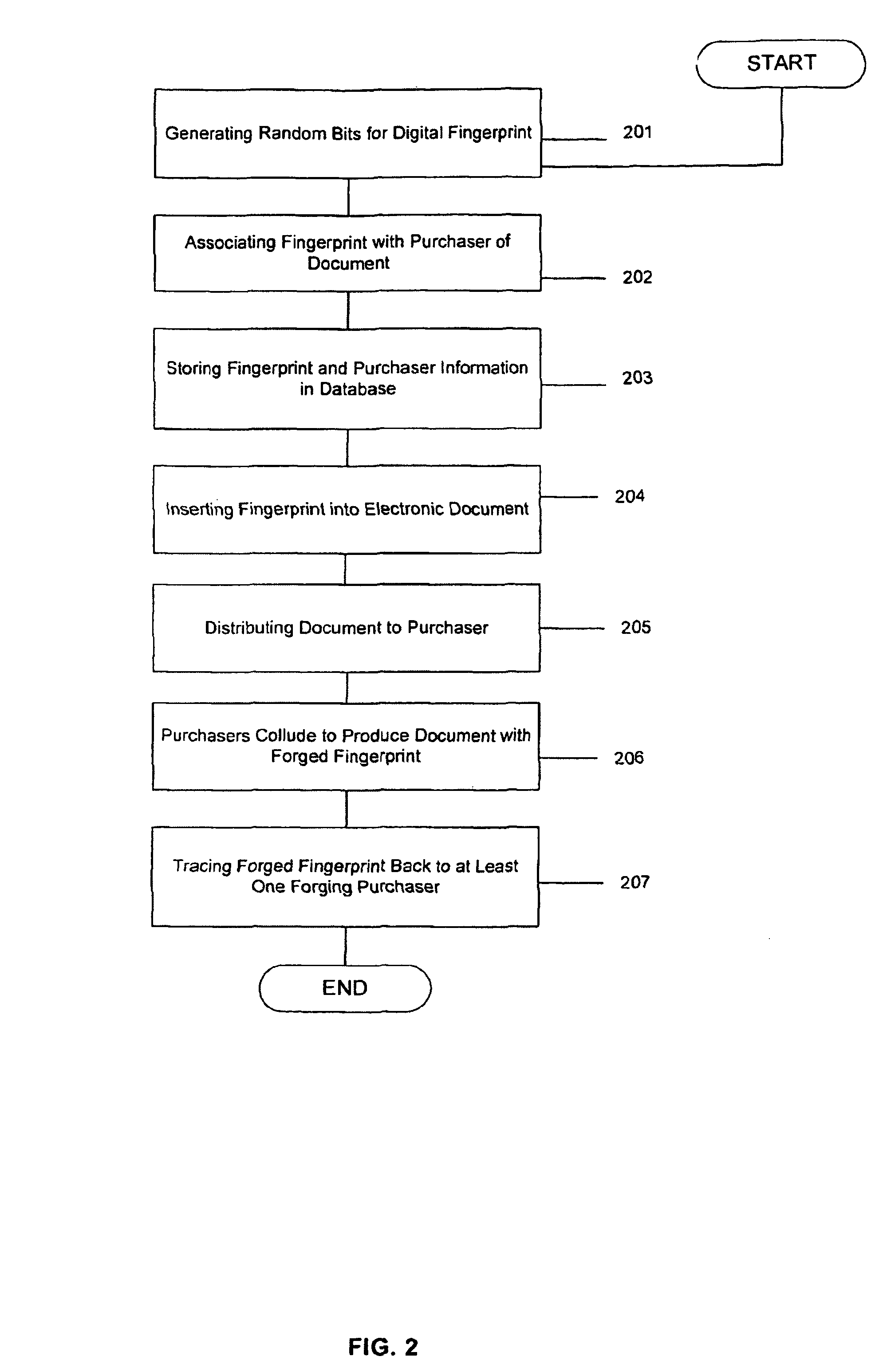Method and system for generating and using digital fingerprints for electronic documents
a fingerprint and electronic document technology, applied in the field of electronic document fingerprint generation and digital fingerprint generation system, can solve the problems of simple or nave copying and redistribution, little to identify the responsible for unauthorized copying and distribution, and arisen challenges, etc., and achieve the effect of sacrificing the integrity of their conten
- Summary
- Abstract
- Description
- Claims
- Application Information
AI Technical Summary
Benefits of technology
Problems solved by technology
Method used
Image
Examples
Embodiment Construction
[0035]The method and system of the present invention is drawn to c-collusion-secure digital fingerprints of optimally short length, meaning that fingerprints of the present invention may be used to determine at least one from among a group of c purchasers who collude to forge a digital fingerprint. The organization and operation of this invention will be understood from a consideration of detailed descriptions of the illustrated embodiments when taken in conjunction with the ten accompanying drawings.
[0036]FIG. 1 provides a preferred embodiment overview of how the present invention may be used by publishers of electronic documents to digitally fingerprint their published content in such a way that at least one of a collusion of purchasers who forge a digital fingerprint may be identified. In the preferred embodiment, a distributor of digitally fingerprinted electronic documents 101 has digitally fingerprinted content to be distributed and stores the fingerprint-purchaser information...
PUM
 Login to View More
Login to View More Abstract
Description
Claims
Application Information
 Login to View More
Login to View More - R&D
- Intellectual Property
- Life Sciences
- Materials
- Tech Scout
- Unparalleled Data Quality
- Higher Quality Content
- 60% Fewer Hallucinations
Browse by: Latest US Patents, China's latest patents, Technical Efficacy Thesaurus, Application Domain, Technology Topic, Popular Technical Reports.
© 2025 PatSnap. All rights reserved.Legal|Privacy policy|Modern Slavery Act Transparency Statement|Sitemap|About US| Contact US: help@patsnap.com



